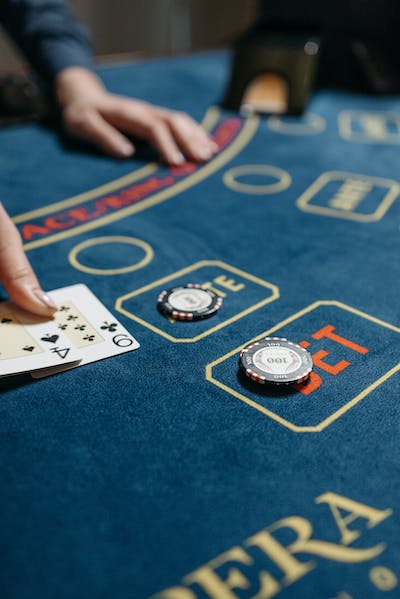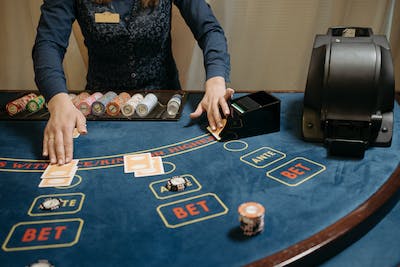The pressure of making the right decision at a blackjack table can sometimes be intense. Some certain rules and techniques should always be followed when it comes to splitting pairs. Knowing them beforehand will ensure that your blackjack experience is filled with calculated chances and successful outcomes.
We will review some crucial reminders for splitting pairs when enjoying a game of blackjack. Continue reading to learn more about when you should split, double down on splits, and even what types of hands may warrant not splitting at all!

Split Aces and 8s
When it comes to playing blackjack online or live, knowing when to split your pairs can make all the difference. And according to seasoned players, splitting a pair of Aces or 8s is a no-brainer. Why? Well, Aces can be worth either 1 or 11 points, making them incredibly versatile for starters.
Plus, with two chances to hit 21, you’re increasing your odds of beating the dealer. As for 8s, they’re a strong starting hand but can quickly become weak if you don’t split. By splitting them, you’re doubling your chances of getting a better hand and coming out on top.
The next time you find yourself with a pair of Aces or 8s, don’t hesitate to split them and make the most out of your blackjack game.
Never Split 10s
A pair of 10s is already considered a strong hand when you play blackjack. So, beware for those feeling the urge to split; it may reduce your chances of winning the hand. While it may seem logical to split the pair to score two hands of 20, statistics indicate that this could actually work against you.
Splitting 10s leaves you with two hands weaker than the original pair, potentially giving the dealer an upper hand. The next time you’re dealt a pair of 10s, it may be best to trust your initial luck and refrain from splitting.
Split 5s and 4s Only If Dealer Has 4-6
Blackjack can be nerve-wracking, especially when the dealer has a 4-6 showing. But did you know that splitting your 5s or 4s could potentially be the right move for you? Splitting your hand lets you double your bet and create two separate hands.
It gives you a chance to potentially win both hands or at least one instead of just hoping for one lucky hand. Of course, this strategy must be more foolproof and used cautiously. Consider taking the risk and splitting your hand the next time you find yourself staring down a dealer with a 4, 5, or 6.

Split 2s and 3s Only if Dealer Has 4-7
There’s nothing quite as satisfying as splitting a pair of cards and watching as the dealer busts. But when should you split? Look only as far as the dealer’s up card. If they’re showing a 4 through 7, it may be in your best interest to split your 2s and 3s. Doing so lets you have the opportunity to double your bet.
Re-split Any Pair Up To Three Times
Splitting pairs in blackjack can be a powerful strategy that gives you multiple chances to win big. But many players may need to realize that you can continue to split a pair up to three times if you are dealt another of the same value after the initial split.
It can create even more opportunities to increase your payout and beat the dealer. However, it’s important to remember that each split requires an additional wager, so make sure you are comfortable with the risk before splitting multiple times.
Split A Pair of 7s Against a Dealer’s 6
Blackjack is a game filled with strategic decisions, and one of the most important ones comes when you are dealt a pair of 7s, and the dealer is showing a 6. While it may be tempting to hit or stand with the pair, the best course of action is to split them.
You are increasing your chances of getting closer to 21 and potentially beating the dealer by doing it. With two separate hands, you have twice the opportunity to make a winning play, and it is often the difference between a big win and a significant loss.
Never Split Face Cards
For blackjack players who have been playing the game for a while, the temptation to split a pair of face cards can be overwhelming. After all, having two Jacks, Queens, or Kings in hand seems like the ultimate winning combination. However, splitting face cards is a bad idea.

These hands already have a high probability of winning, so dividing them into two separate hands only increases your chances of losing one or both. It may be hard to resist the urge to split, but in the end, it’s better to stick with what you know works and avoid the unnecessary risk.
Split Aces and 8s Only When the Dealer Doesn’t Have an Ace
Another strategy when playing this game involves splitting Aces and 8s, but only when the dealer doesn’t show an Ace. Why is this important? Well, in blackjack, an Ace can either be a high or a low card, so it’s a pretty powerful card to have in play.
If the dealer has an Ace, keeping your Aces the same is best because you could end up with two hands that might not add up to 21. On the other hand, splitting 8s can also benefit you because it increases your chances of getting a 21 or close to it. Remember, paying attention to the dealer’s face-up card is the key to splitting in blackjack. Keep this in mind, and you could be on your way to beating the house.
Conclusion
By following these helpful blackjack tips for splitting pairs when playing, you can significantly improve your chances of coming out ahead in a game. These rules are designed to maximize your chances of getting a winning hand and beating the dealer. So please take advantage of them and become a more strategic blackjack player in your future games.